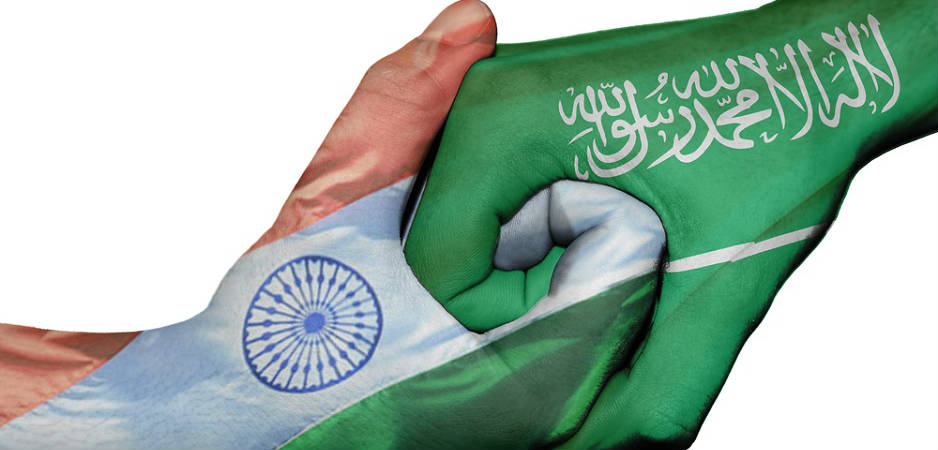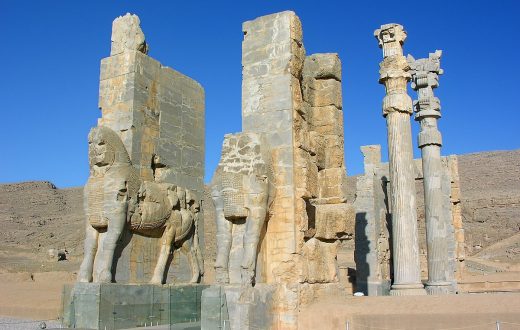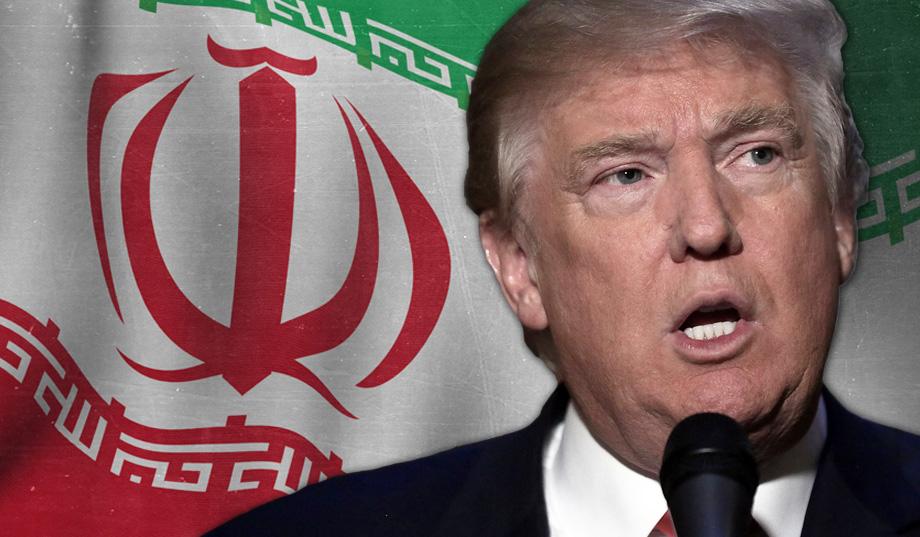Iran and Saudi Arabia are countries where freedom of expression is more than limited and where the governments tried to control the medias and the interpersonal relations between individual especially communications between males and females. They are both facing the emergence of new means of communications such as Internet, WhatsApp , Instagram or encrypted connexions. These new technologies permit their citizens to have greater freedom and privacy. In these Kingdoms of intolerance , this is inacceptable.
Analysis
As technology has progressed, Internet and cellphone users have gained greater freedom and privacy. At the same time, governments can use some of the same tools to achieve their own ends, whether for simple communication or for better surveillance. For states such as Iran and Saudi Arabia — which, for all their fierce rivalry, share the same struggle in managing political opposition at home — these technologies present both an opportunity and a challenge to leaders striving to stay in control.
Despite their antagonism toward each other, Iran and Saudi Arabia have similar strategies for regulating electronic interaction. Both monitor citizens’ emails, social media and text messages in the name of protecting their nations’ moral fiber and national security. And without the capability to develop their own equivalents of popular programs such as Twitter, Telegram, WhatsApp and Facebook, both countries have been forced to accept the risks of such applications along with their advantages, managing the prospect of greater public discourse — and dissent — as best they can.
Same Strategy, Different Outlooks
While Iran and Saudi Arabia face comparable domestic challenges to their governments’ legitimacy, their abilities to monitor the threats differ, largely due to qualitative differences in the countries’ technological infrastructure. These gaps can be explained at least in part by Tehran’s and Riyadh’s unique relationships with the rest of the world.
Since the Islamic republic was born of revolution in 1979, Iran has worked toprotect the revolution’s ideals at home and to export them to groups elsewhere in the region. Tehran’s focus on safeguarding the tenets of the anti-West coup has contributed to Iran’s isolation ever since. Iran’s outsider status, coupled with sanctions, has limited its access to the best foreign technologies and expertise. As a result, the country has had a hard time improving its rudimentary Internet infrastructure, despite having developed adequate cyber warfare capabilities.
In fact, according to Akamai Technologies, Iran has the slowest Internet speeds in the world, even though national bandwidth speeds rose by an average of 2.5 percent throughout 2015. The snail-like infrastructure can be primarily attributed to the Telecommunication Company of Iran’s (TCI’s) monopolistic grip over the country’s telecommunications sector. The company, heavily controlled by the Islamic Revolutionary Guard Corps, is responsible for doling out bandwidth to Internet service providers in Iran. Citizens and officials alike are aware that improvements in Internet infrastructure will mean improvements in state monitoring and censorship, even as they help Iranians communicate with one another and access information more quickly. In response to these concerns, Iranian President Hassan Rouhani has tried to meet the public’s demand for faster Internet while reducing the amount of censorship his government performs.
But not everyone supports the president’s efforts, and a dispute is brewing over his telecommunications policies. Rouhani’s appointment of Communications Minister Mahmoud Vaezi, a close ally who is not aligned with the hard-line conservatives who dominate much of Iran’s telecommunications industry, has led to improved Internet speeds and access across Iran. Last year, data traffic on TCI’s mobile network rose by 500 percent after Vaezi decided against renewing an exclusive 3G contract with a provider approved by the Supreme Council of Cyberspace — a group established by Supreme Leader Ayatollah Ali Khamenei and controlled by hard-liners. The move undoubtedly upset some of the country’s clerics, who have argued that mobile Internet is “un-Islamic.”
Despite the strides Iran has made, it still has a long way to go. The country’s entire communications network is subject to state monitoring and control, and any future improvements will likely be measured and gradual. The Iranian government has reportedly reached out to Chinese companies for solutions on how best to monitor the Iranian population. However, even for technologies unrelated to surveillance, Iran will continue to encounter considerable obstacles as it works to improve its telecommunications infrastructure. For example, the United States recently slapped sanctions on China’s ZTE for working with Iran’s telecommunications industry while the country was still subject to some U.S. sanctions.
Saudi Arabia, like Iran, matured into its modern form in the late 20th century. As revolution transformed Iran into a conservative, Shiite-majority oil producer, Saudi Arabia began to incorporate into its strategy a degree of competition with and hostility toward its Persian Gulf neighbor, pulling friends and allies together to form a counterweight in the region. From the 1981 formation of the Gulf Cooperation Council to the 2015 creation of a Saudi-led Sunni alliance against terrorism, the importance of this foreign policy goal has remained unchanged.
But even Iran is of less concern to the House of Saud than are the threats to its rule from within Saudi Arabia. From Riyadh’s point of view, most of the serious threats to the ruling family’s hold on power can be traced to the Eastern Province, where Shiite communities have lived for centuries. (Transnational Shiite organizations in the region, such as the Organization for the Islamic Revolution in the Arabian Peninsula, have a history of receiving support from Iran.) Because Internet and social media communication is a significant component of modern Shiite activism in the Eastern Province, the Saudi government considers monitoring and censorship a high priority. And like Tehran, Riyadh has used foreign third-party software and remote control devices to assist its surveillance efforts.
But unlike Iran, Saudi Arabia has been able to access and develop more advanced telecommunications infrastructure, in part because of its closer cooperation with countries that can provide the necessary technology and expertise. Presently, getting fast Internet speeds is only a problem in Saudi Arabia’s most remote rural areas. The country boasts two nationwide Internet service providers and six mobile phone network providers, all of which are closely monitored by Saudi Arabia’s Communications and Information Technology Commission.
Monitoring Morality and Censoring Dissent
While the sectarian differences between Sunni Saudi Arabia and Shiite Iran mark a distinct ideological divide between the Middle Eastern powers, the two are remarkably similar in that their governments’ legitimacy rests in Islamic law. Because of this, both states have a vital interest in defending socially conservative values. One way they do so is by monitoring and filtering their populations’ Internet and phone activities.
In Iran, for instance, websites are filtered if they are deemed “un-Islamic,” a policy that blocks thousands of websites from Iranian computers. Meanwhile, programs that allow users to make calls over the Internet, such as Skype or Viber, are considered “culturally damaging,” though the more probable reason for their ban is that they eat into telecommunications profits and are harder to monitor. Saudi Arabia similarly blocks Internet calls and filters websites through a socially conservative lens. In 2014, the Saudi government approved 94 percent of the 466,863 user-submitted requests to block online content, finding the bulk of the websites in question “pornographic.”
Of course, impropriety is not the only thing Tehran and Riyadh hope to quash. Political expression and dissent are not permitted on Saudi Arabia’s streets, which means careful online expression — so long as it remains within culturally understood bounds forbidding obscenity, critiques of the royal family and references to terrorism — is a critical outlet for Saudi citizens. In Iran, where demonstrations have not been seen since street protests overwhelmed the government in 2009, the situation is not much different. Political expression only occurs behind closed doors or online, and even then it is restricted by tight self-censorship norms. It is no coincidence that Iran’s Computer Crimes Law, which stipulates the protocols for Internet censorship, was adopted only a month after the contested presidential election in June 2009. Since then, Facebook and Twitter have been outlawed, while text message filtering has reportedly risen.
Data Encryption: A Mixed Blessing
In spite of their governments’ best efforts, though, Iranians and Saudis are increasingly using the world’s biggest social media applications, and some are doing it under officials’ radar. Three applications in particular — Facebook, WhatsApp and Telegram — have taken off in both countries, while Twitter has spread uncontrollably in Saudi Arabia. (Young Saudis produce 40 percent of the Tweets that come from the Arab world.) And as these programs have grown in popularity over the past few years, their guarantees of user privacy have strengthened. In February, Telegram founder Pavel Durov announced that, “Privacy, ultimately, is more important than our fear of bad things happening, like terrorism.” A few months later, WhatsApp released a new data encryption method and claimed that even “oppressive regimes” could not ask the company to hand over users’ content.
Social media companies’ rising encryption standards and resistance to political pressure present both problems and possibilities for many governments, including those of Iran and Saudi Arabia. On one hand, more secure platforms are a boon for the states that use them for their own communication needs. On the other hand, such applications make communications within the population more difficult to watch and crack down on.
As these programs become more popular, they will get harder and harder to outlaw without eliciting substantial protest from consumers. Between 13 million and 14 million of Telegram’s total 100 million users worldwide are Iranian, according to the country’s information and communications technology minister. The Iranian Student Polling Agency puts that figure closer to 20 million. Both a threat and a solution to the Iranian government’s security, Telegram is widely used by officials and reformists alike. Iranian lawmakers rely on the program so much that they blocked a nationwide ban of Telegram. Yet their own efforts to censor reformist candidates’ websites ahead of elections were thwarted by the information’s availability on the application.
Saudi officials, for their part, use anonymous WhatsApp and Twitter accounts as repositories to share information and communicate in secret, just as young Saudis do. These programs will therefore enjoy some of the same protections from legislative action that Telegram has in Iran, especially as Saudis’ demands for more global connectivity and better technology grow. Compared with the stance of Iranian hard-liners, who view the Internet as a threat to the government’s legitimacy, Saudi rulers see it is a way to appease their people and secure the House of Saud’s reign in the process. As the Saudi government embarks on its ambitious reform program in the coming years, Saudi citizens will gain greater access to communications technologies and, by extension, the rest of the world. Meanwhile, Iranians’ opportunities will continue to come at the mercy of governing officials with conflicting views, perpetually beholden to the volatile swings in Iranian politics.






